Being recent immigrants to the rural paradise that is Juniorvania, and therefore infatuated with all things pastoral and wild, there are something like nine or ten separate bird feeders hanging up in and around the area surrounding The Pond just outside our back door. The rear of our house features several contiguous large windows, offering an expansive view of the consequent avian comings and goings, to be enjoyed while munching on a bowl of Honeycomb at the dining room table, futzing about with a recalcitrant bok choy in the kitchen, or tippy-tapping on the notebook while seated on the sofa in front of the fireplace.
As you can probably imagine, the number and variety of these many excellent observation posts has encouraged a significant increase in the amount of ornithological research being carried out by the scientists, philosophers and other thinkers the Glorious Leadership have on permanent retainer. Any natural scientist worth his NaCl will tell you that the first order* of business is a concerted effort towards species identification. Thus did the People’s Theorists initially identify the following creatures, believed (at one time) to be birds.
The American Goldfinch (nomenclature unofficial, there is a motion on the floor in the People’s Legislature to re-designate this species as the “Juniorvanian Goldfinch” or (this suggestion from the Hard Rock Party of Juniorvania) the “Juniorvanian Asskicker”:
the Redwing Blackbird:
the Cardinal:
the Blue Jay:
the Rose Breasted Grosbeak:
the Flicker:
the Indigo Bunting:
and this noisy (but thankfully high-flying) little fellow, to date unidentified:
The comings and goings of the birds are many. There is one cedar tree in particular that behaves much like a particle emitter, except rather than spewing neutrons, there are little yellow goldfinches asskickers rocketing out from deep within it’s hidden recesses and darting wildly in all directions. Staring out into the yard, one gets the distinct feeling that the scene is the ornithological equivalent of O’Hare airport, with both arrivals and departures coming in a steady stream and any number of incoming craft stacked up over the field, waiting to begin final approach.
The immediate consequence of all this airborne activity is that our National Seed Consumption is up significantly. So far, two re-supply excursions have been made to the local purveyors of niger, sunflower seeds and suet, and it is looking very much like a third is in the offing. Every one of the feeders in the entire yard is cleaned out like old Mother Hubbard’s proverbial cupboard. Again.
It was this persistent and prodigious seed consumption that has led the Scientists of the Great Republic of Juniorvania to their most astonishing scientific discovery to date: the creatures pictured above are not in fact avian, but rather porcine. These brightly coloured little pork chops knock back way too much chow to be birds; they do not, as it were, “eat like a bird.”
So there you have it; Juniorvanian scientists have conclusively proven that pigs can – and do – fly.
——
* The taxonomists among you are no doubt killing yourselves over that little pun…

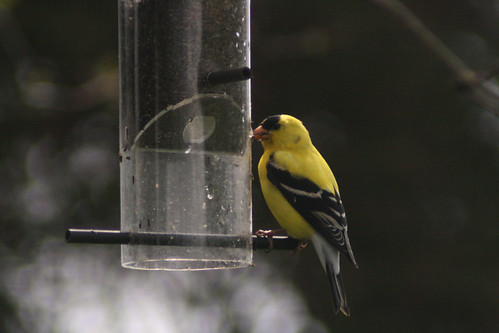
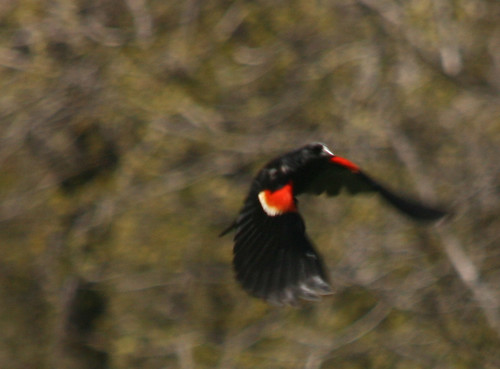

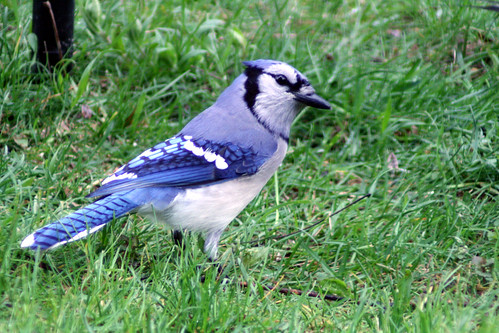
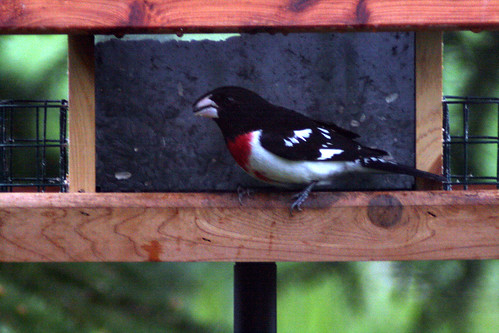
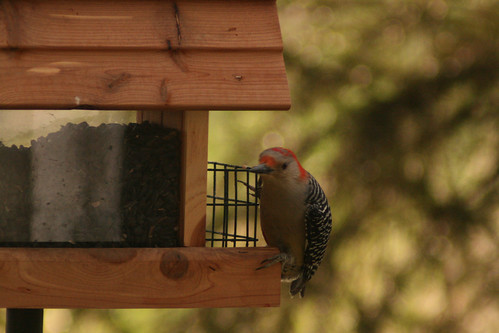
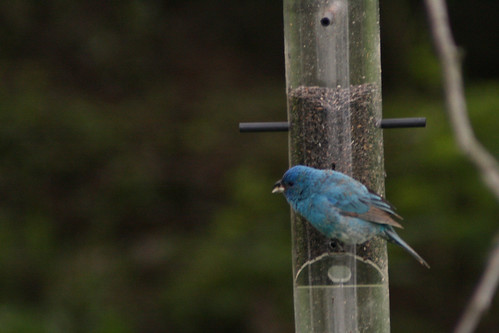
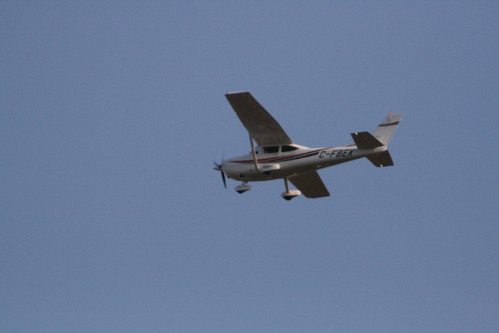
Out of curiosity, do the birds line up and take turns, or is it something of a free-for-all with dominant pecking order(s) that need to be established.
My money’s on the Cessna 182S for hungriest. Or perhaps the Bunting, the length to width aspect ratio appears decidedly low.
That seems to depend on the feeder in question, and (in certain cases) the amount of available seed in the feeder. The niger seed feeder, for example, is tall and thin. There are more than enough perches (half a dozen or so) to satisfy interested diners (mostly Asskickers and Indigo Buntings). As the supply of seed begins to fall, however, certain of these perches become the avian equivalent of the lounge, minus cocktails. The lower perches assume primacy and the battles begin to develop. We get a big kick out of the quarrels over who has spent too long at the buffet, and the activity of the goldfinches chasing one another in particular is noticeably more frequent.
Most of the other feeders seem to be designed in such a way as to minimize conflict over seatings for dinner, though there has been some scrapping over the suet bars when they are in place on the ends of the large wooden feeder – you can see the (empty) cages that ordinarily hold the suet bars in the photos of the Grosbeak and the Flicker.
How ’bout some props for the action shot of the Redwing Blackbird? I know it’s slightly blurry, but that’s my best “bird in flight” so far…
Capturing motion — even the spirit of motion — in a still photograph is damnably difficult, and especially with an SLR that blacks out the viewfinder at the instant of shutter release (did I get the right shot or what?); the blackbird shot has a good sense of dynamics.
Plus it looks like an iconic Klingon ship from the movies.
You should have seen when the lasers started firing out of his wingtips…er… well, maybe I dreamed that part.
[…] of Defence, already gravely embarrassed earlier this season by incidents involving invaders both ornithological and mammalian, had essentially thrown up their hands and […]